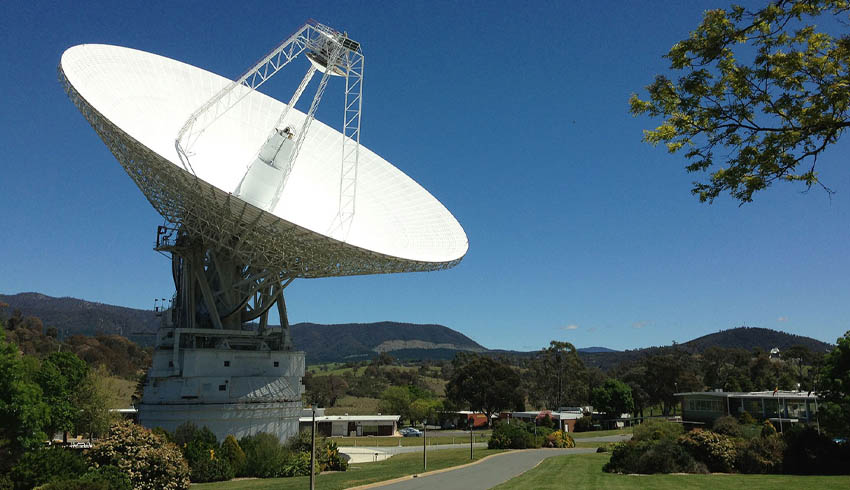For nearly five decades, DSS43 has been a vital part of NASA’s global Deep Space Network. It provides two-way radio contact with dozens of robotic spacecraft exploring the solar system and beyond.
It is the largest steerable parabolic dish in the southern hemisphere. After all this time, some of the systems on the big dish are showing signs of age.
To prepare the dish for decades to come, DSS43 is going offline for 10 months while a team of nearly 200 engineers and technicians, including local and overseas contractors, give it a top-to-bottom, inside-and-out spruce up.
Managing the project is Nigel Chauncy, radio systems technician at CDSCC. In his 22 years at the complex, Chauncy has worked on many projects, but this is the largest he has ever undertaken.
“We’ll be installing two new high-powered transmitters on ‘43’, as well as upgrades to its entire electrical cabling, power supply, cooling systems. Plus a whole lot more,” Chauncy explained.
“A major milestone is the replacement of one of the huge central feed cones. The logistics of bringing in a 450-tonne crane to lift the two-storey-high cone and raising it over 70 metres to delicately position it inside the dish is a challenge I’ve been looking forward to.”
Rhiannon Sutherland is overseeing personnel and site safety. A Ngunnawal woman who’s worked in the civil construction world, Sutherland is enjoying the challenges her new role at CDSCC presents.
“The hardest thing is we’re not only working to meet Australian legislative requirements but also American and Commonwealth guidelines. We’ve got to put all three together to make sure they all comply and are to an Australian standard,” Sutherland said.
“There is going to be multiple high-risk jobs undertaken throughout this project. My guiding principle is to ensure that at the end of the day, everyone gets to go home to their families.”
The tracking station team has the talents and skills to return DSS43 to service by January 2021. This is in time for several new robotic missions arriving at Mars.
DSS43’s improved capabilities will ensure these missions are supported. It will also enable NASA’s plans to return humans to the moon in the mid-2020s and future human missions to Mars.

